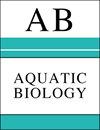不同特征的微塑料被纳入淡水球蝇的幼虫案例
IF 0.8
4区 生物学
Q3 MARINE & FRESHWATER BIOLOGY
引用次数: 41
摘要
塑料污染存在于世界各地的水生系统中。虽然有许多研究调查了微塑料与海洋生物的相互作用,但微塑料对淡水生物,特别是昆虫的影响却很少研究。以前的研究主要集中在微塑料的饮食摄取上,但微塑料在动物结构中的存在在很大程度上是未知的。到目前为止,微塑料只在一种海洋多毛类动物的管子中被观察到。在淡水系统中,常见的毛翅目蝇(Trichoptera)幼虫利用幼虫丝和来自底栖沉积物的矿物颗粒来筑巢,底栖沉积物是已知的微塑料水槽。因此,我们检查了球虱病例的微塑料存在。野外采集基底鳞翅目鳞翅目标本,过氧化氢分解,微塑料聚合物类型通过微傅里叶变换红外光谱测定。我们发现了不同形状、颜色、大小和化学成分的初级和次级微塑料(如聚丙烯、聚乙烯、聚氯乙烯)。因此,这是第一个表明微塑料存在于淡水生物的生物结构中的研究。幼虫阶段通常比成年个体更脆弱,微塑料可以运输持久性有机污染物并排放有毒的渗滤液。在粉虱幼虫的情况下,这些物质靠近敏感的幼虫体,可能对幼虫有害,最终可能阻碍其发育。我们讨论了球蝇幼虫在淡水生境中作为微塑料生物指标的潜力。本文章由计算机程序翻译,如有差异,请以英文原文为准。
Microplastics of different characteristics are incorporated into the larval cases of the freshwater caddisfly Lepidostoma basale
Plastic pollution is present in aquatic systems worldwide. While numerous studies have investigated microplastic interactions with marine organisms, microplastic effects on freshwater organisms, especially insects, have been rarely studied. Previous studies have mainly focused on dietary uptake of microplastics, but the presence of microplastics in animal constructions is largely unknown. To date, microplastics have only been observed in the tubes of a marine polychaete species. In freshwater systems, common caddisfly (Trichoptera) larvae build cases by using larval silk and mineral grains from benthic sediments, which are known microplastic sinks. Therefore, we examined caddisfly cases for microplastic presence. We collected caddisfly Lepidostoma basale cases in the field, disintegrated them using hydrogen peroxide, and determined microplastic polymer type through micro-Fourier-transform infrared spectroscopy. We found primary and secondary microplastics of different shapes, colors, sizes and chemical compositions (e.g. poly propylene, polyethylene, polyvinyl chloride). Thus, this is the first study to show that microplastics are present in the biological construction of a freshwater organism. Larval stages are usually more vulnerable than adult individuals, and microplastics can transport persistent organic pollutants and emit toxic leachates. In the caddisfly larval case, those substances are in close proximity to the sensitive larval body, which may be harmful for the larva and may eventually impede its development. We discuss the potential of caddisfly larval cases to act as microplastic bioindicators in freshwater habitats.
求助全文
通过发布文献求助,成功后即可免费获取论文全文。
去求助
来源期刊

Aquatic Biology
生物-海洋与淡水生物学
CiteScore
2.70
自引率
0.00%
发文量
7
审稿时长
3 months
期刊介绍:
AB publishes rigorously refereed and carefully selected Feature Articles, Research Articles, Reviews and Notes, as well as Comments/Reply Comments (for details see MEPS 228:1), Theme Sections, Opinion Pieces (previously called ''As I See It'') (for details consult the Guidelines for Authors) concerned with the biology, physiology, biochemistry and genetics (including the ’omics‘) of all aquatic organisms under laboratory and field conditions, and at all levels of organisation and investigation. Areas covered include:
-Biological aspects of biota: Evolution and speciation; life histories; biodiversity, biogeography and phylogeography; population genetics; biological connectedness between marine and freshwater biota; paleobiology of aquatic environments; invasive species.
-Biochemical and physiological aspects of aquatic life; synthesis and conversion of organic matter (mechanisms of auto- and heterotrophy, digestion, respiration, nutrition); thermo-, ion, osmo- and volume-regulation; stress and stress resistance; metabolism and energy budgets; non-genetic and genetic adaptation.
-Species interactions: Environment–organism and organism–organism interrelationships; predation: defenses (physical and chemical); symbioses.
-Molecular biology of aquatic life.
-Behavior: Orientation in space and time; migrations; feeding and reproductive behavior; agonistic behavior.
-Toxicology and water-quality effects on organisms; anthropogenic impacts on aquatic biota (e.g. pollution, fisheries); stream regulation and restoration.
-Theoretical biology: mathematical modelling of biological processes and species interactions.
-Methodology and equipment employed in aquatic biological research; underwater exploration and experimentation.
-Exploitation of aquatic biota: Fisheries; cultivation of aquatic organisms: use, management, protection and conservation of living aquatic resources.
-Reproduction and development in marine, brackish and freshwater organisms
 求助内容:
求助内容: 应助结果提醒方式:
应助结果提醒方式:


